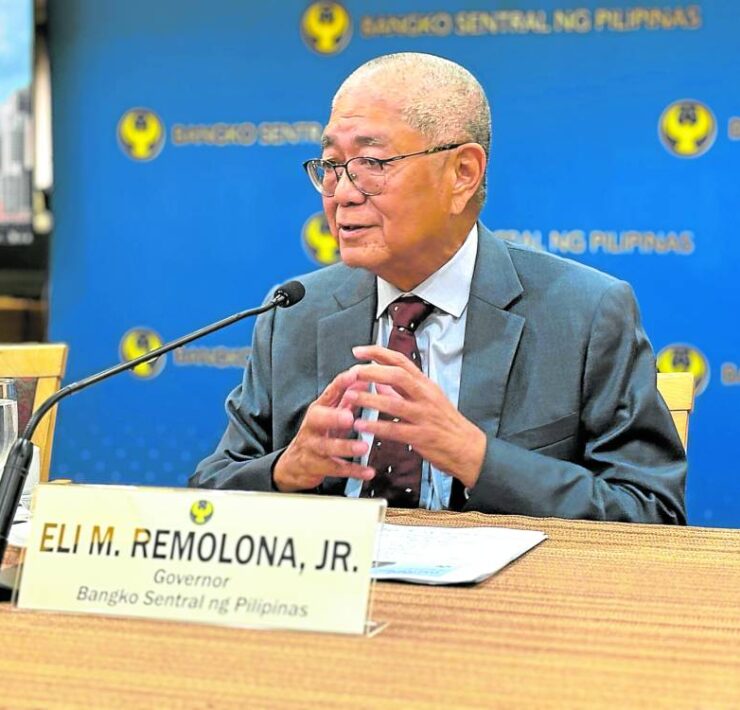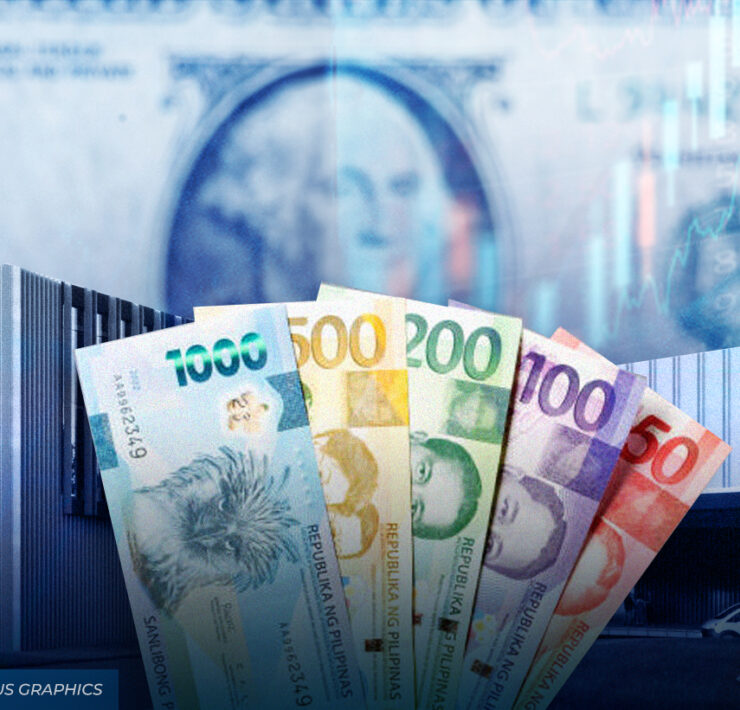BSP may hold off further rate cuts

There are persistent price pressures that have yet to dissipate and could still pose a risk to the inflation outlook, a situation that might prompt the Bangko Sentral ng Pilipinas (BSP) to delay its rate cuts, Governor Eli Remolona Jr. said.
Speaking to reporters on Wednesday, Remolona said that while inflation is projected to stay within the 2 to 4 percent target range of the BSP this month, hitting pause at the Dec. 19 meeting of the policymaking Monetary Board is still on the table depending on the data.
On the flip side, the weaker-than-expected economic growth in the third quarter might prompt the BSP to unleash a third rate cut next month, he added.
“Our readings show there are still some slight pressures on inflation,” the central bank chief said.
“Inflation pressures may cause us—maybe—to pause a bit. But weak growth may cause us to cut,” he added.
The central bank entered its easing era last August with a 25-basis-point (bp) reduction to the benchmark rate. In October, the BSP further trimmed the policy interest rate by a quarter point to its current level of 6 percent.
Typhoons
While an easing delay is possible, Remolona had stressed that the central bank is still on its “gradual” rate cutting cycle. Overall, the BSP boss said cumulative rate cuts worth 100 bps are possible next year.
Separately, BSP Assistant Governor Zeno Ronald Abenoja said it remains unclear if inflation would pick up in November following the onslaught of powerful typhoons, as base effects may distort the year-on-year data.
“We will look at more information because inflation rose last year,” Abenoja said in an interview.
“We will coordinate with the Interagency Committee on Inflation and Monetary Outlook to have a broader sense of the impact of typhoons on different commodities,” he added.
Remolona’s clear signal of continued relaxation of monetary policy marked his first public comments since Donald Trump’s victory in the US presidential elections. Already, Trump’s threat to start a global trade war is driving “safe haven” demand for dollars and tempering expectations for US Federal Reserve cuts, pressuring currencies like the Philippine peso.
The peso is currently trading past the 56- to 58-per-dollar assumption of the Marcos administration for this year, with Trump’s election win fueling more volatility that’s pulling the local unit close to the record-low 59.
For now, Remolona said he’s not worried about the peso’s weakness, adding that the BSP had been intervening in the foreign exchange market in “small amounts” to prevent a sharp slump that could stoke inflation.
“We don’t use the policy rate to control the exchange rate,” he said.





















